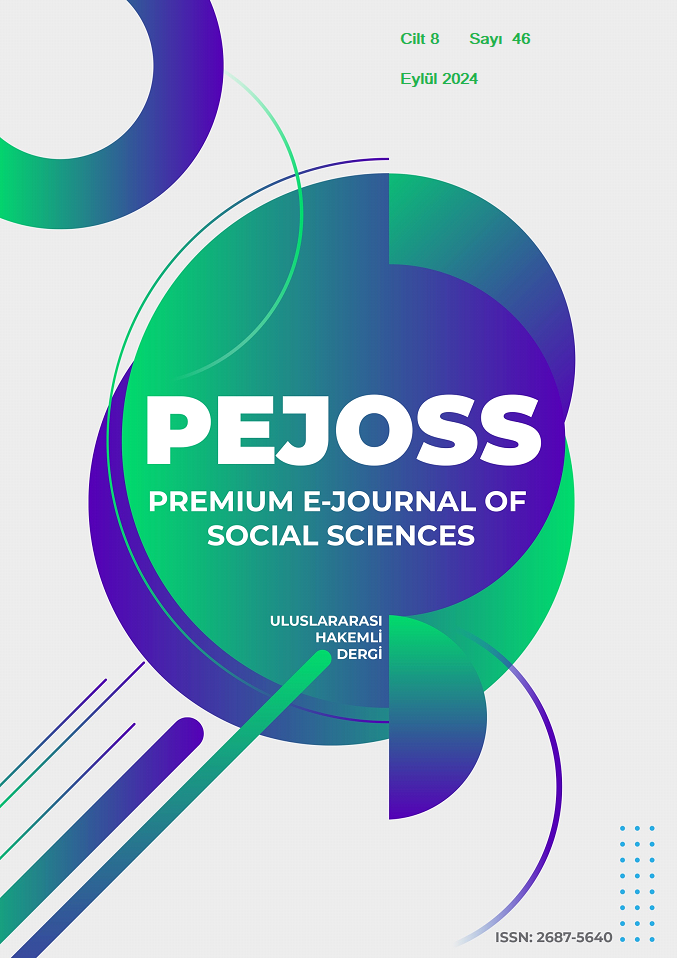Disastrorsity of Van Province in the Context of Seismıcity: A Qualitative Research and Disaster Management Strategies
DOI:
https://doi.org/10.5281/zenodo.13881508Keywords:
Earthquake, Disaster and Risk Management, Strategy, Qualitative ResearchAbstract
Van province, located in the east of Turkey, has a location with a high earthquake risk due to its geographical and geological features. This situation revealed the seriousness of the earthquake risk in the region with the 2011 Van Earthquake. The disaster nature of the region poses a wide range of threats to settlements, especially loss of life and property. Of course, the region is exposed not only to seismic events but also to natural disasters such as floods, avalanches, landslides and rockfalls. However, since the city's exposure to seismic events is higher than other disasters, earthquake disasters come to the fore. Therefore, this study examines the disaster vulnerability of Van province in the context of seismicity from a qualitative perspective and evaluates disaster management strategies for these risks with the participant opinions of field experts.
In the study, face-to-face interviews were conducted with 10 participants with semi-structured questions using the qualitative research technique and data were obtained. These data were analyzed and examined in depth with the MAXQDA24 package program and disaster management strategies were determined accordingly. Disaster management strategies have been shaped in general terms, based on participant opinions, with an inference to strengthen risk management, which is pre-disaster preparation. In this context, the strategies that need to be implemented are; It is concluded that it can develop with strategic practices focused on disaster preparedness, building stock, education, ground and settlement, economic sufficiency, management, planning and control. In other words, it has been concluded that being prepared for a disaster will reduce the destructive effect of the disaster or at least the vulnerability will remain at an acceptable level.
Downloads
References
AFAD, (2024). Açıklamalı Afet Yönetimi Terimler Sözlüğü, https://www.afad.gov.tr/aciklamali-afet-yonetimi-terimleri-sozlugu.
AFAD, (2024). Afet ve Acil Durum Yönetimi Başkanlığı, Afet Raporları, https://www.afad.gov.tr/afet-raporlari.
AHDER, (2024). Afete Hazırlık ve Deprem Eğitimi Derneği, Türkiye’de son 100 Yılda Yaşanmış Depremler, https://www.ahder.org/son-100-yilda-turkiyede-meydana-gelen-buyuk-depremler.
Akkoyunlu, M.F. (2021). Tarihsel Depremler ve Kullanılan Yöntemler, Boğaziçi Üniversitesi Kandilli Rasathanesi, Deprem Araştırma Enstitüsü, Deprem İzleme Merkez Raporu, 21(1), 587-590.
BM, (2023). Birleşmiş Milletler Sürdürülebilir Kalkınma Çalışmaları: Depreme Yönelik Ayrıntılı Bir Bakış, https://turkiye.un.org/tr/resources/publications?search_api_fulltext=deprem.
Büyükkaracığan, N. (2016). Türkiye’de Yerel Yönetimlerde Kriz ve Afet Yönetim Çalışmalarının Mevzuat Açısından Değerlendirilmesi, Selçuk Üniversitesi Sosyal ve Teknik Araştırmalar Dergisi, 12(1), 195-219.
DASK, (2024). Van İli Deprem Risk İstatistikleri, https://dask.gov.tr/tr/interaktif-deprem-haritasi.
Endeksa, (2024). Kent istatistiği, https://www.endeksa.com/tr/analiz/turkiye/van/demografi.
Ergünay, O. (2009). Afet Yönetimi: Genel İlkeler, Tanımlar ve Kavramlar, DSİ Yayınları
Erkal T., Değerliyurt, M. (2009). Türkiye’de Afet Yönetimi, Doğu Coğrafya Dergisi, 14(22), 147-164.
Giyik, C. (2016). Van İli Örneğinde Afet Sonrası İskan Politikaları, (Yayınlanmış Yüksek Lisans Tezi), Fen Bilimleri Enstitüsü, Van Yüzüncü Yıl Üniversitesi.
Giyik, C., Oyguç, R.A., Anıktar, S. (2022). Van İlinin Afetselliği ve Afet Konutlarında Yer Seçimi Uygulamaları, Doğal Afetler ve Çevre Dergisi, 8(2),178-195.
Güler, A. (2002). Dünya’da ve Türkiye’de Büyük Felaketler-Savaşlar, Salgınlar, Depremler, Yangınlar, (2020 Basımı), Halk Kitabevi.
Güler, A.Ü. (2018). Sürdürülebilir Afet Yönetiminde Atık Yönetimi, Doğal Afetler ve Çevre Dergisi, 4(2), 236-246.
Hoyois, P., Below, R., Scheuren, J.M., Guha-Sapir, D., (2007), Annual Disaster Statistical Review: Numbers and Trends, Centre for Research on The Epidemiology of Disasters (CRED), School of Public Health, Catholic University of Louvain, Brussels, Belgium
İŞKUR, (2020). Türkiye İş Kurumu İşgücü Piyasası Araştırması Van İli 2020 Yılı Sonuç Raporu, https://media.iskur.gov.tr/45209/van.pdf.
Kadıoğlu, (2008). Modern, Bütünleşik Afet Yönetiminin Temel İlkeleri, JICA Türkiye Ofisi Yayınları.
Ketin, İ. (1977). Van Gölü ile İran Sınırı Arasındaki Bölgede Yapılan Jeoloji Gözlemlerini Sonuçları Hakkında Kısa Bir Açıklama, Türkiye Jeoloji Kurumu Bülteni, 20(2),79-85.
Köse, O.,Özkaymak, Ç. (2002). Van Şehri Kuzeyi Genç Göl Çökellerinde Aktif Tektonik Bulgular, ATAG-6 Aktif Tektonik Araştırma Grubu (6. Bildiri Toplantısı) Bildiri Özet Kitabı, Ankara.
Kumar, G.S.J. (2000). Disaster Managemant and Social Development, International Journal of Sociology and Social Policy, 20(1), 66-81.
Özşahin, E. (2013). Türkiye’de Yaşanmış (1970-2012) Doğal AfetlerÜzeeine Bir Araştırma, 2. Türkiye Deprem Mühendisliği ve Sismoloji Konferansı 25-27 Eylül 2013, Hatay, Türkiye Deprem Mühendisliği Derneği, 1-8.
Ploughman, P. (1997). Disasters, The Media and Social Structures: a Typology of Credibility Hierarchy Persistence Based on Newspaper Coverage of The Love Canal and Six Other Disasters, Disasters,(21), 118-137.
TDK, (2024). Türk Dil Kurumu Sözlüğü, https://sozluk.gov.tr/.
TUİK, (2024). Türkiye İstatistik Kurumu, İstatistik Veri Portalı https://data.tuik.gov.tr/Kategori/Get Kategori?p=Insaat-ve-Konut-116.
Utkucu, M., Budakoğlu, E., Yalçın, H., Durmuş, H., Gülen L., Işık, E. (2013). 23 Ekim 2011 Van (Doğu Anadolu) Depreminin (Mw=7.1) Sismolojik Özellikleri, Hacettepe Üniversitesi Yerbilimleri Uygulama ve Araştırma Merkez Bülteni, 35(2),87-108.
Van AFAD, (2022), İl Planları, https://van.afad.gov.tr/kurumlar/van.afad/kutuphane/ıl-planları/van-ırap.pdf.
Downloads
Published
How to Cite
Issue
Section
License
Copyright (c) 2024 Premium e-Journal of Social Science (PEJOSS)

This work is licensed under a Creative Commons Attribution 4.0 International License.


